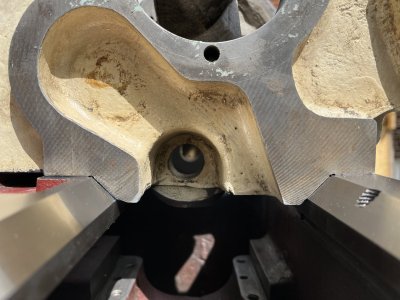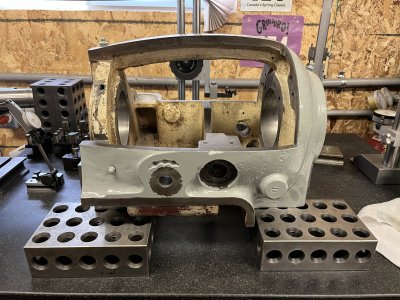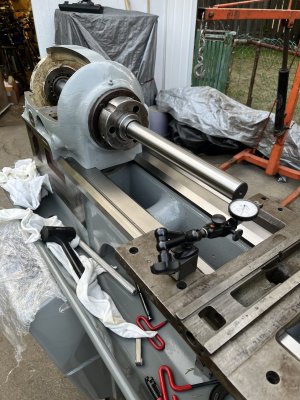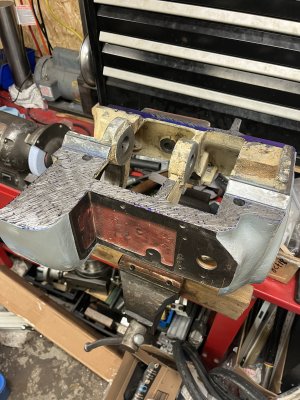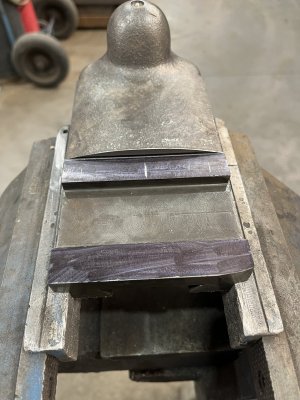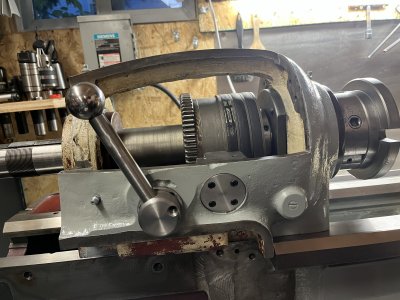Rauce
Ultra Member
@Mcgyver gets to say he told me so now 
I did the blue check with the headstock just now. The bluing alone tells me I have good contact on the flat surface.
I also got out an indicator to check for rocking/soft foot since it’s 4 points essentially. I was able to measure 1-2 tenths of rock across two corners which I’m thinking is acceptable.
The other check I did was to see if it’s seated in the angled ways… and it isn’t. With the bolts just snugged down I can move the headstock about .003” from hitting the angled way on one side, to the other.
So I will have to scrape the flat down a bit to get full contact on the angled ways.
I’m thinking this is the better of the two ways it could go if it’s going to be out.
Edit: here’s a photo showing the surfaces the contact.
I did the blue check with the headstock just now. The bluing alone tells me I have good contact on the flat surface.
I also got out an indicator to check for rocking/soft foot since it’s 4 points essentially. I was able to measure 1-2 tenths of rock across two corners which I’m thinking is acceptable.
The other check I did was to see if it’s seated in the angled ways… and it isn’t. With the bolts just snugged down I can move the headstock about .003” from hitting the angled way on one side, to the other.
So I will have to scrape the flat down a bit to get full contact on the angled ways.
I’m thinking this is the better of the two ways it could go if it’s going to be out.
Edit: here’s a photo showing the surfaces the contact.
Attachments
Last edited:

